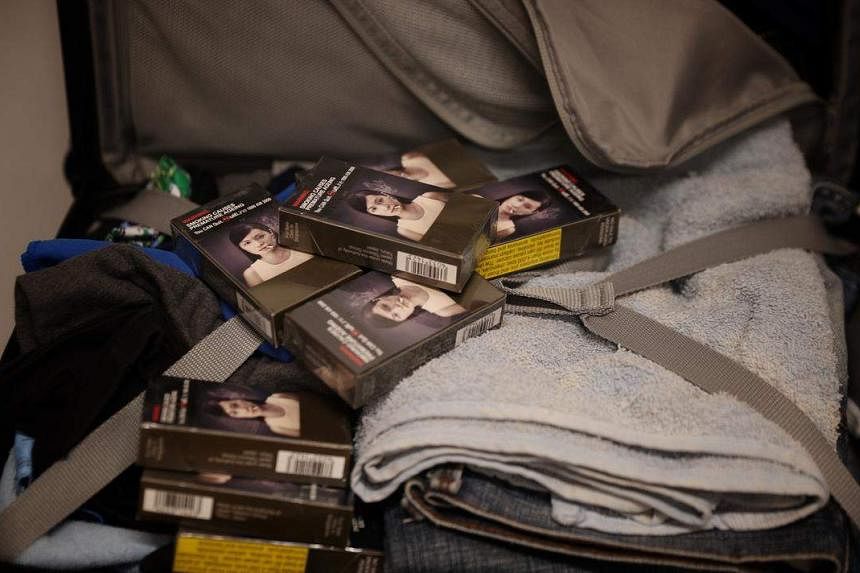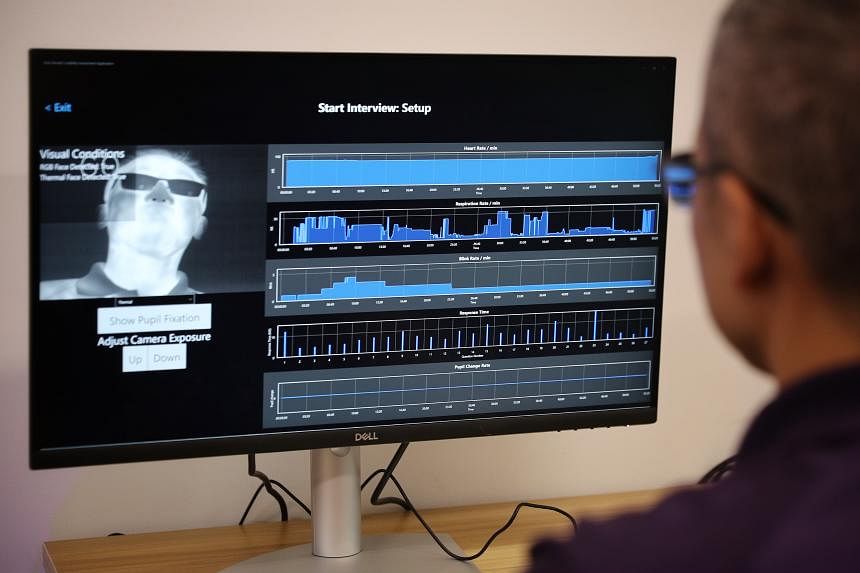SINGAPORE - Handed packs of cigarettes and bags of white powder, they were given simple instructions: Hide the contraband and do not get caught.
But their eyes and hearts gave them away.
Put through the next-generation lie detector currently being developed by the Home Team Science and Technology Agency (HTX), the “smugglers” tried to mask their lies.
But they blinked twice as frequently, had more dilated pupils and experienced wider heart rate fluctuations as compared with those with nothing to hide.
HTX began developing a contactless next-generation lie detector in October 2021, with the aim of building a portable device that can be used by officers across the Home Team.
One scenario calls for the system to be deployed at the checkpoints, to help identify smugglers, traffickers and those entering Singapore with malicious intent.
The HTX’s Biometric and Profiling Centre of Expertise believes that it is possible to tell an innocent person from a guilty one by measuring metrics, and identified six.
These are: frequency of eye blinks, pupil dilation, eye fixation, breathing rate, heart rate and the time taken to respond to questions.
While some of these are traditionally measured using sensors that have to be physically attached to the subject, the team tapped cameras.
For example, one camera is used to detect facial colour changes caused by fluctuations in heart rate and blood flow, while another can monitor breathing by the changes observed at the nostrils.
Between April and June this year, the HTX team recruited 80 participants, who were then divided into two groups. Half acted as the control group, and were asked to answer a series of questions truthfully.
But for the other 40, they were told to hide contraband items in a suitcase, and attempt to smuggle it past a security check.

They were then made to answer a series of questions while attempting to not get caught.
The “smuggler” group was incentivised with the promise of a monetary reward if they were able to evade being found out.
Mr Kee Ein Cern, deputy director of profiling at HTX, said his team is processing the findings from the experiment, but the preliminary results are promising.
What they have found so far is that pupil dilation, blinking and changes in heart rate may be indicators of hostile intention.
“The guilty ‘smugglers’ blinked around twice as frequently, had more dilated pupils and experienced wider heart rate fluctuations as compared with the control group,” said Mr Kee.
“We are aiming to hit a lie detection accuracy of more than 70 per cent in future. The accuracy of lie detection is dependent on a multitude of factors, such as the interviewer’s skills, mindset of the subject, and so on.”
He added that, even if subjects try to suppress and control one or two elements, such as their blinking and breathing, it is difficult to successfully control other elements, like their heart rate and eye focus, simultaneously.
He said: “There will likely be at least one metric that will change, indicating a response that can be measured when they are lying.”
While traditional lie detector tools like polygraphs take two to three hours, an assessment using the prototype set-up developed by HTX takes only 10 to 15 minutes.
But the set-up is currently bulky and takes some time to be deployed.

Ms Vivi Chew, an engineer in the team, said the goal is to have the entire set-up be made portable. There is no set timeframe for when the lie detector is to be rolled out for field use.
“Ideally, we want to pack everything into a single unit that is mobile and can be easily deployed,” she added. “But before that, we’ll have to refine the processes and methodology first.”
Through workshops, the team consulted Home Team officers, including those with decades of investigation experience.
While some of the officers were initially sceptical about the effectiveness of the technology, they were quickly persuaded that it would help with operations after testing it out for themselves.
By the end of such sessions, many of them were asking for a version customised to their different operation requirements to be deployed quickly to assist them.
Dr Wong Sum Thai, the team’s head of prototyping and integration, said it is such enthusiasm for their work that inspires him.
“We’ve had good feedback from the workshops, and are refining the methodology based on some of their inputs,” he added.
“This is what excites me most – the possibility of seeing our work being implemented on the ground and benefiting everyday users.”


